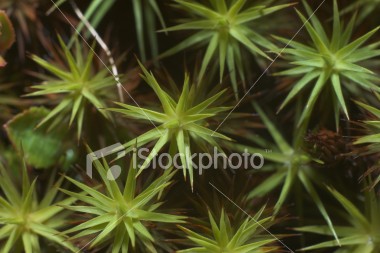How does the Vaccinium oxycoccus acquire its nutrients?
Vaccinium oxycoccus forms an extensive root system that sits just a few
centimeters below the layer of Sphagnum that share it's habitat. The
roots end in very find root tips that are very similar to the types found in
desert plants. (Jaquemart p. 387)
Some nutrients, especially nitrogen, are acquired through a mutualistic
relationship between Vaccinium oxycoccus and the fungus
Hymenoscyphus ericae. The low amount of nutrients in peat bogs would likely
lead to the death of Vaccinium oxycoccus if it weren't for the
relationship it as with Hymenoscyphus ericae. (Jaquemart p. 387)
Vaccinium oxycoccus is located in peat bogs, a habitat that is
notorious for its low nutrient concentrations. There is little circulation of
nutrients in peat bogs and what nutrients are available are constantly being
used to create peat. Vaccinium oxycoccus undergoes photosynthesis using
leaves that extend from vertical shoots that protrude out of the layer of
Sphagnum in a peat bog. (Jaquemart p. 389-390)
The application of fertilizers is shown to increase the production of shoots in
Vaccinium oxyccus. This in turn leads to the creation of more leaves
and a greater ability to undergo photosynthesis. (Jaquemart p. 389)
Vaccinium oxycoccus is also highly susceptible to metal toxins like
manganese and iron. It has been shown that they relationship that Vaccinium
oxycoccus shares with Hymenoscyphus ericae also helps to prevent
metal toxins from killing Vaccinium oxycoccus. (Jaquemart p. 389)
Vaccinium oxycoccus is also highly susceptible to cold weather
conditions and low amounts of water. Luckily the flowering part of Vaccinium
oxycoccus, which is what later produces the fruit, is able to become
dormant during the winter months. (Jaquemart p. 387)
Vaccinium oxycoccus is a vascular seed plant that is able to move
nutrients through out itself using xylem and phloem. It's leaves contain stomata
which allow for the exchange of oxygen and carbon dioxide. Vaccinium
oxycoccus is able to store it's food as starch. (Jaquemart p. 387)
The shallow root system of the Vaccinium oxycoccus forces it to rely on
the deeper root system of the Sphagnum mosses to bring water closer to
the surface for Vaccinium oxycoccus to take advantage of. (Jaquemart p.
387)
